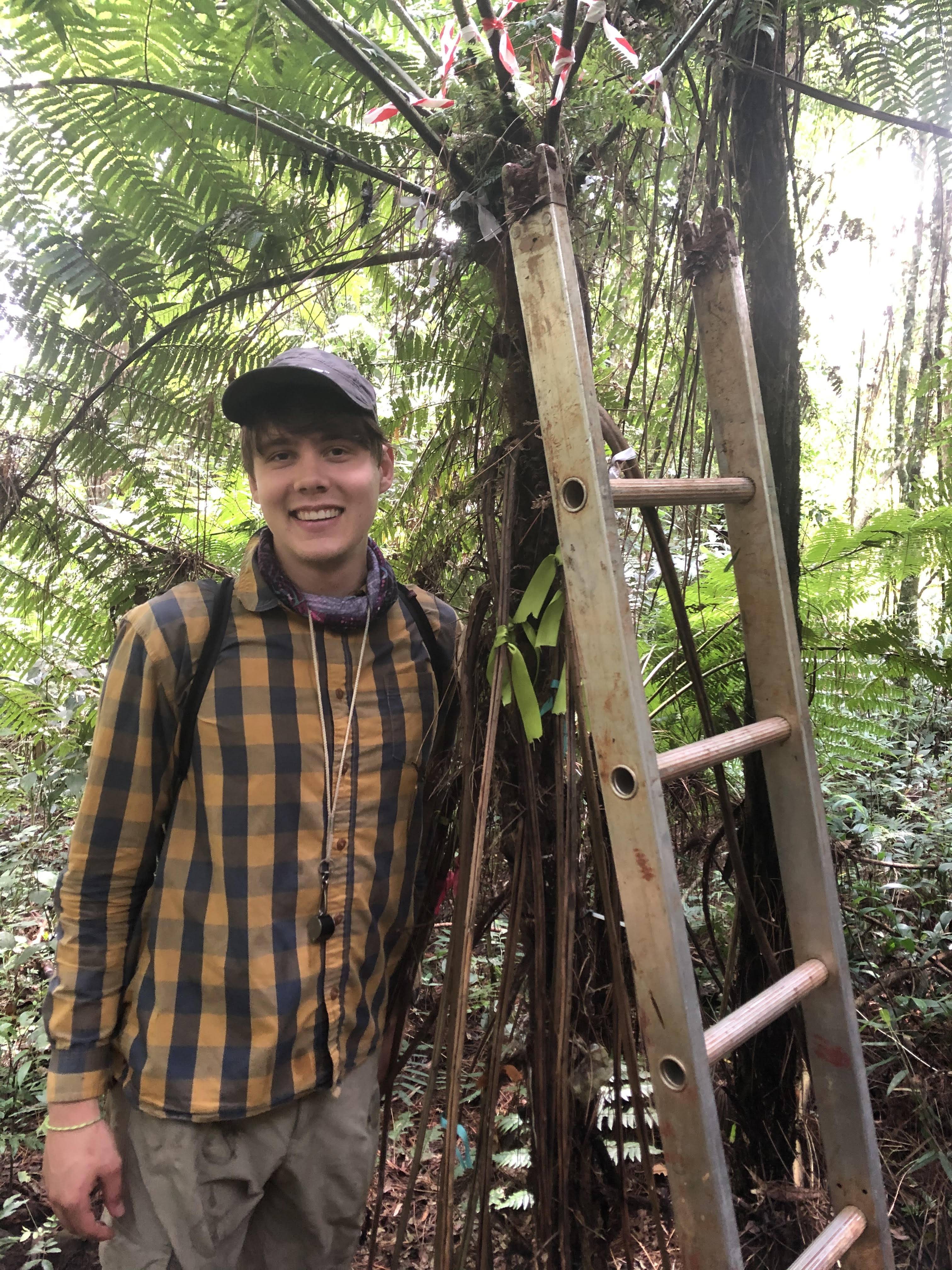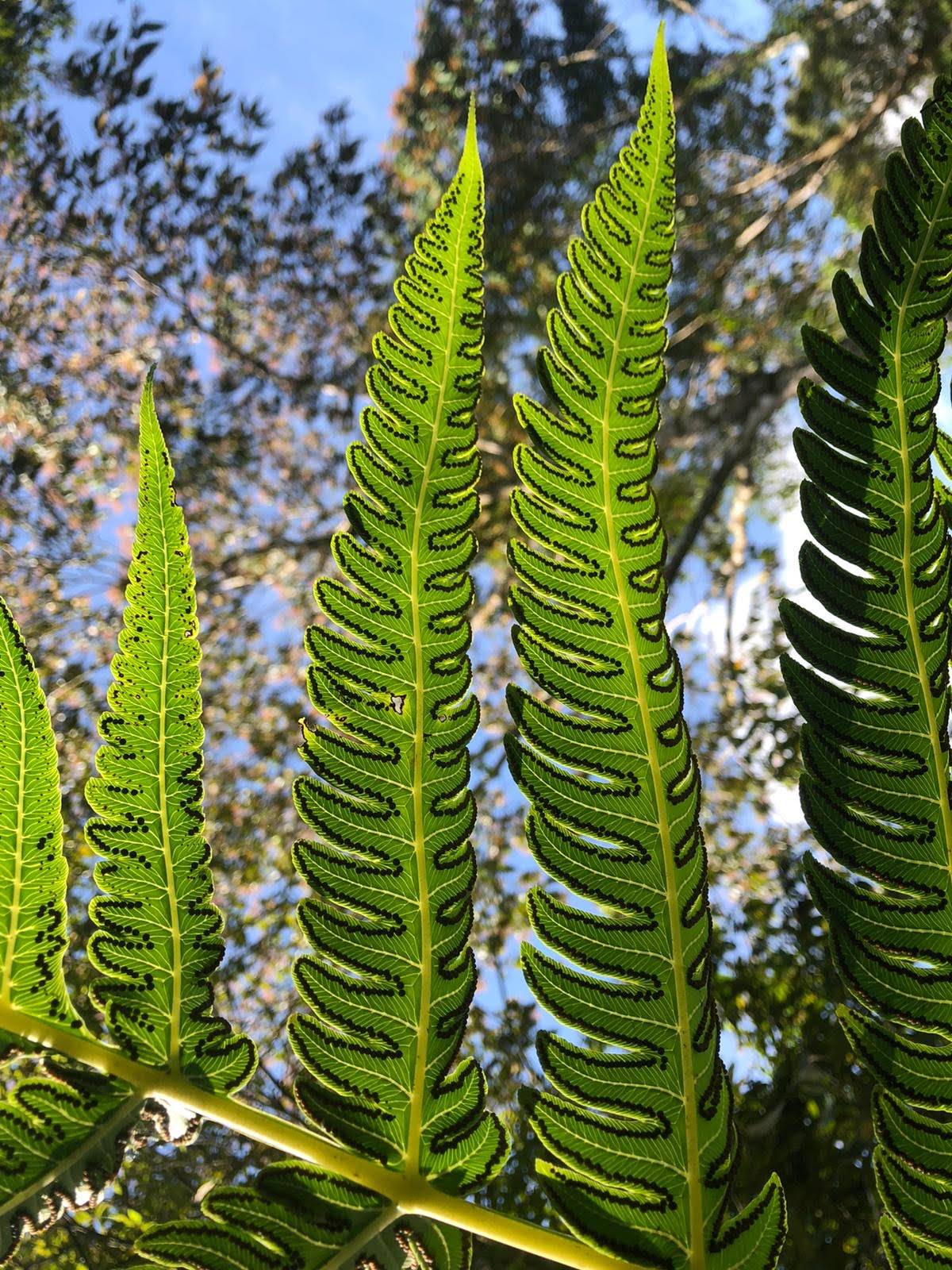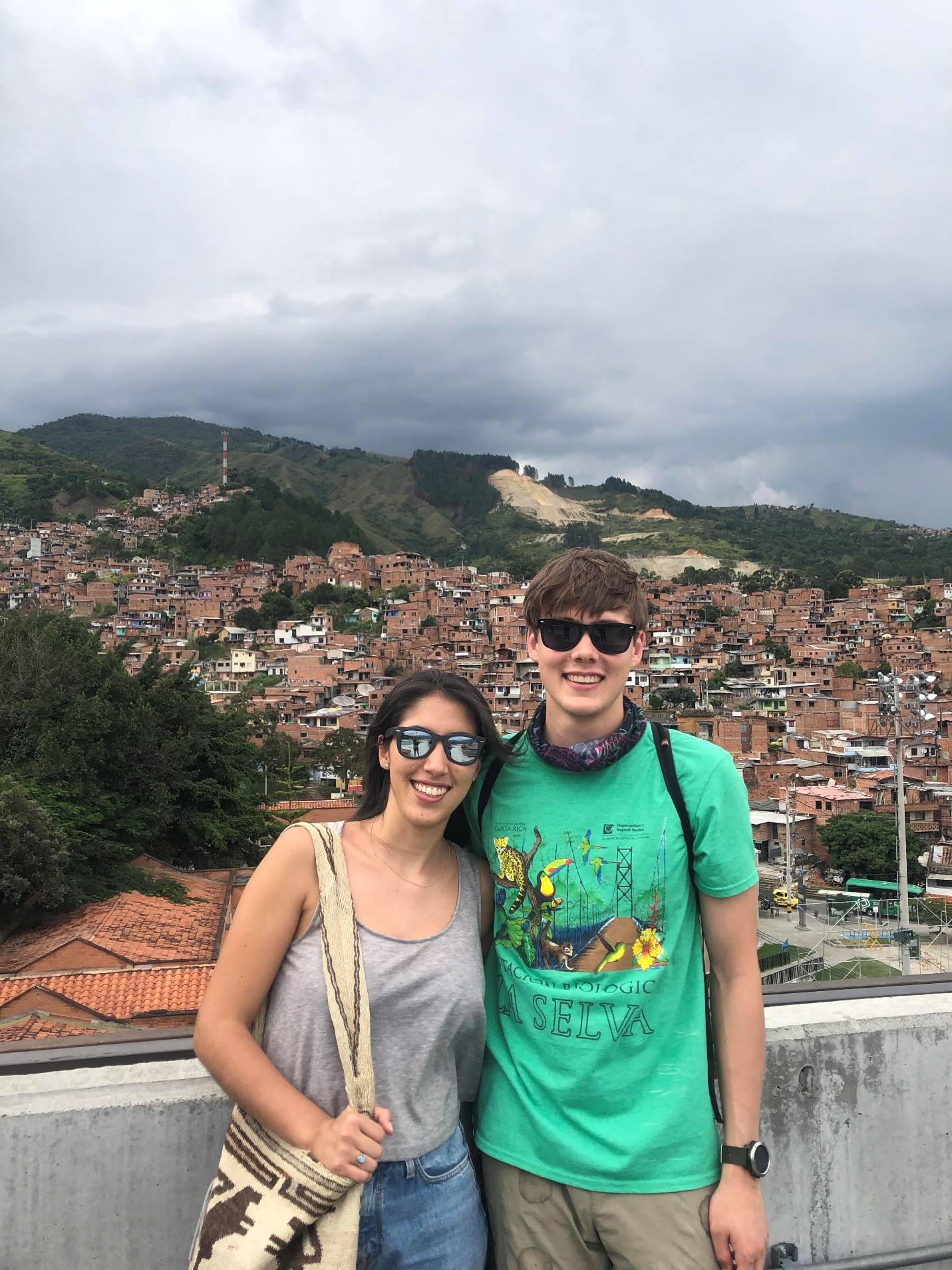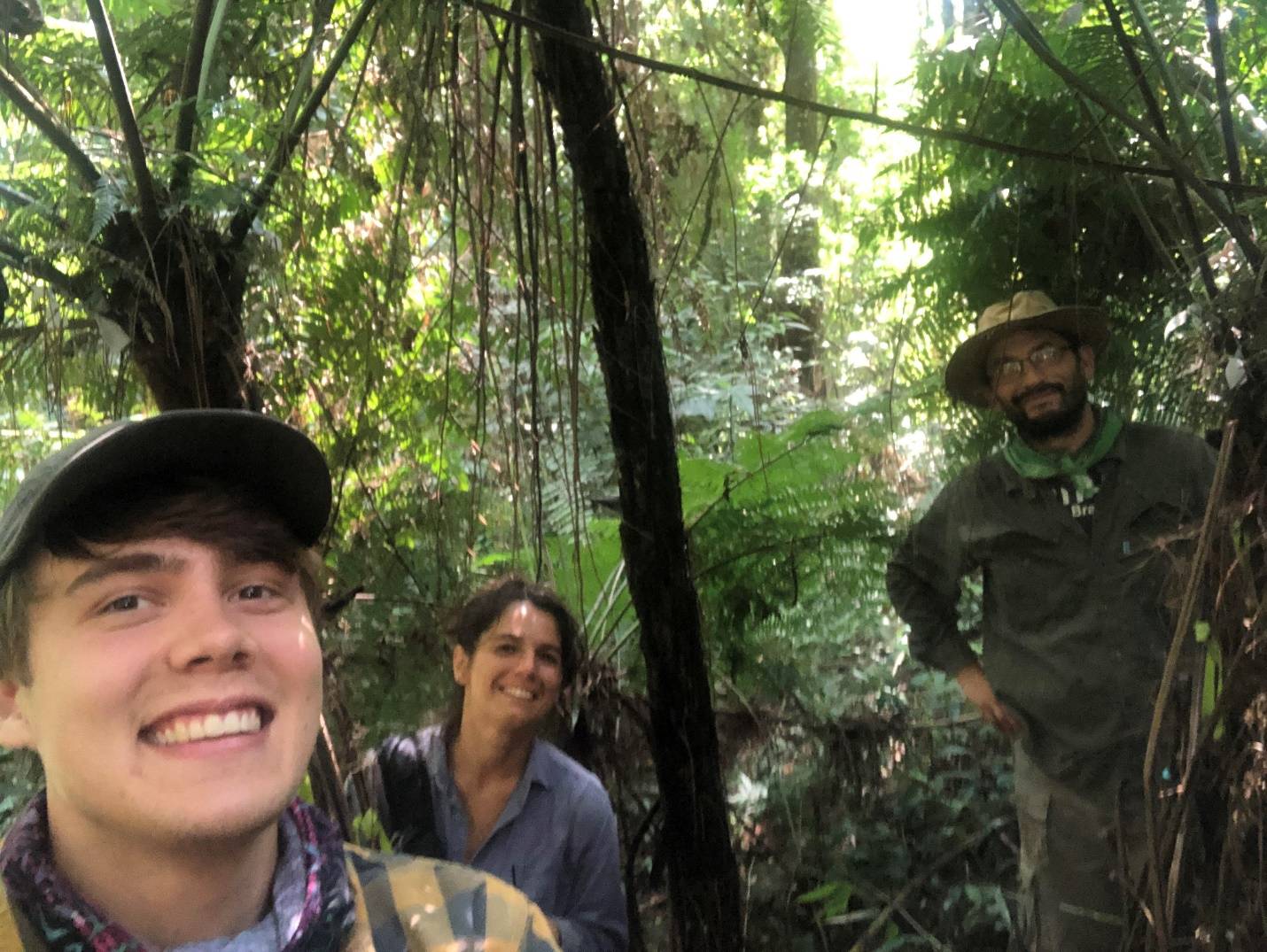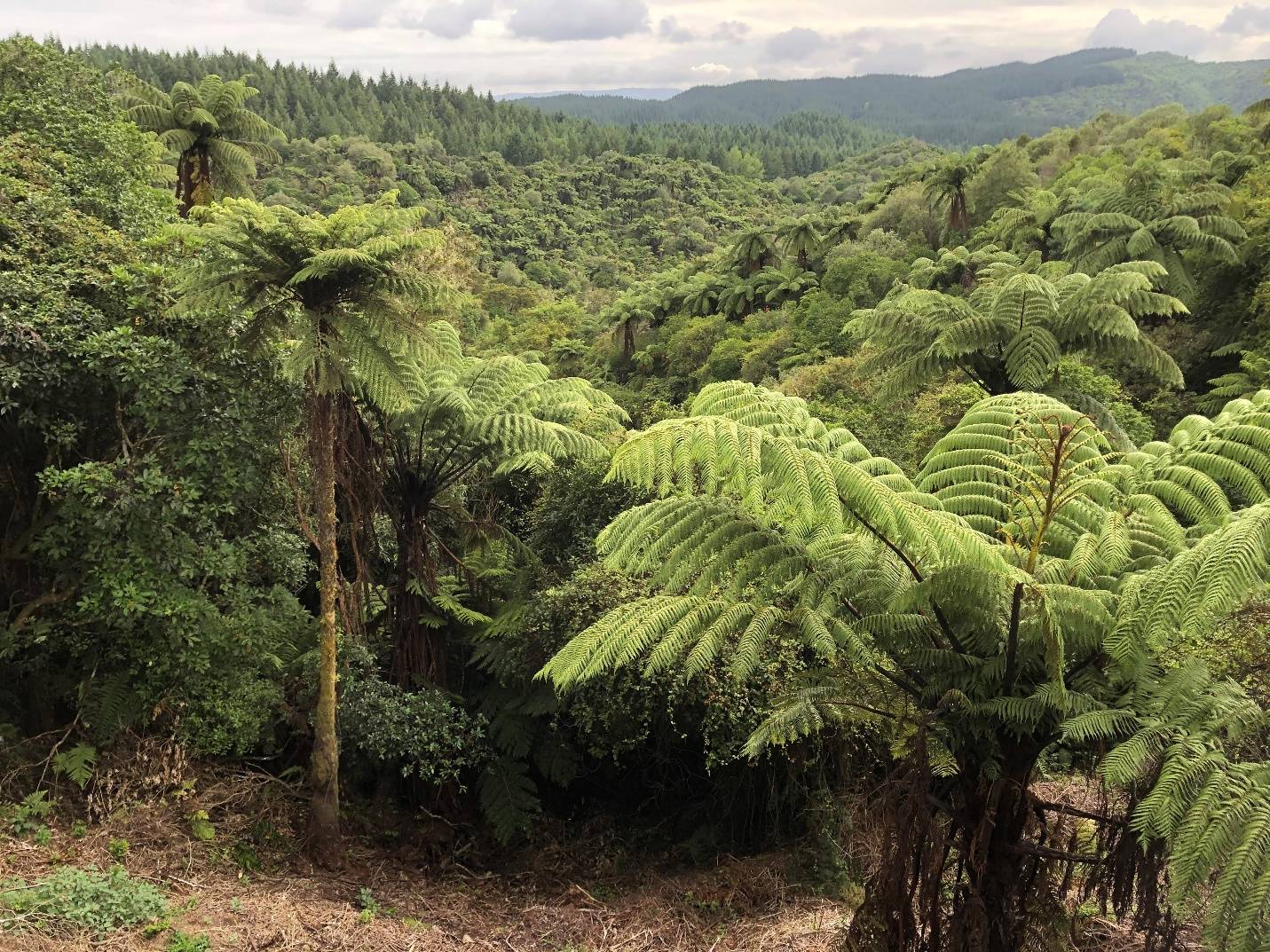I came to Colgate interested in plants, not knowing much about how they worked or the first thing about how to research them. I was fortunate to find myself in Professor Eddie Watkins’ sporadically cluttered Fern Ecophysiology lab later my freshman year. He gave me the freedom to explore different research projects and the homely energy in the lab inspired an almost mad scientist in me, doing multiple experiments with ferns at a time, just for the love of seeing what would happen. I was hooked. Ever since, I haven’t looked back, so it was only natural to use my AMS funding to figure out a way to study ferns.
With half of my funding I took a graduate level tropical ferns and lycophytes course in Costa Rica and with the other half I strung together another whirlwind trip in the spirit of “mad-scientistry” vibes and visited Colombia, Argentina, and New Zealand over a month and a half. I spoke solely Spanish to my generous hosts whom I had met on the fern course in Costa Rica the previous year, which turned out to be one of the hardest things I have ever had to do. I visited herbarium – repositories of dried and pressed plant collections for reference – studied at field sites, and shared many fun-filled nights with local researchers, speaking Spanglish of course.
I stayed in Medellín, Colombia with Susana Vega for 9 days, practicing Spanish with her and her practicing English with me. We explored the beautiful city and vibrant dance and art culture. I ate lots of food cooked on the street, enjoyed front row seats to impromptu dance performances, and said “no, gracias” at every corner to those trying to sell some obscure fried snack that I couldn’t quite make out most of the time. I met researchers at her university: the University of Antioquia, where she did her thesis on a taxonomic revision of Selaginella, a genus of lycophytes, in Colombia’s Antioquia region. We took a terrifying motorcycle taxi to a field site and explored the ferns there. I eventually left Medellín, Colombia to visit Argentina and continue my ferntastic adventure.
In Argentina, my Spanish was further challenged by a new accent and new slang, and we departed for a 12 day fieldwork trip before I could form two coherent sentences in under a minute. We visited 3 different sites, cooking various animal parts over fire places for hours on end every night and enjoying the company and night sky. During the day, I would assist Agustina Yañez and Gonzalo Marquez in their ongoing experiments on the growth and epiphyte communities of Alsophila setosa, a tree fern. My fingers full of spines from the tree fern and my stomach the fat from the roasted meat, sleeping on the plane to New Zealand was easy.
Once in New Zealand, it was like I had landed in heaven; there were so many ferns! My best friend and research partner Aidan Harrington ’21 was there to greet me over a month after after our departure from Costa Rica on the Tropical Ecology field course. I met professor Bruce Burns and his postdoc James Brock at the airport and we immediately left to visit multiple field sites on the north island of New Zealand. Jet lagged, having spoken English for the first time in a month, and with the smell of rotten eggs in my nose (caused by the nearby volcanic hotspots), I again slept well. We continued to tour the island, checking off the ferns we had seen from the native ferns of NZ list while discussing fern ecology with the experts of New Zealand. We spent the rest of the week exploring Auckland and preparing to go to Australia for our study abroad experience.
This fern filled adventure has changed my life and will continue to change my life for the foreseeable future. I learned so much of not only research and language skills, but trip planning and self-discovery skills. I have become more confident and adventurous and I am excited to take apply the things I have learned on this trip to the rest of my career. I intend to go to graduate school for plant ecophysiology to pursue a research and teaching career in the university setting. The ferntastic mad-scientistry has just begun!
